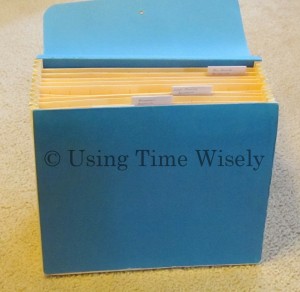 As it is the middle of the month, my desk is once again beckoning me to sort, file, and toss paperwork that has built up for the last two weeks. If you are working through paperwork, then you understand. It really is never-ending.
As it is the middle of the month, my desk is once again beckoning me to sort, file, and toss paperwork that has built up for the last two weeks. If you are working through paperwork, then you understand. It really is never-ending.
When I used to work at my desk at home, I would get so distracted by the paperwork that I could not get much done. So, I typically blog and plan either at our dining room table or on the couch. Being close to the dishwasher and washer downstairs, I can monitor tasks while I check e-mail, write, and read.
Having a specified time during the month, allows me to concentrate on priorities knowing I will get to the paperwork twice a month. Visualizing a clean, organized desk motivates me to tackle those piles. Some stacks are larger than others, but what a great feeling when those items are all back in their rightful places.
One set of paperwork I rarely touch is our estate planning documents. Though definitely our most prized and important documents, our estate planning packages provide the details of our wishes when we leave this earth.
In beginning this category last week, I shared how I recommend hiring an attorney to create these documents for you. Having worked as a legal assistant for a few years, I understand the value of having the proper documents from your state of residence. If you do not have an estate planning package, then please start saving for one now. A little here and there will add up, but you must start somewhere.
For the estate planning package, both Paul and I have separate documents. However, the type of document is the same with the first document being our Last Will and Testament, and the second is our General Power of Attorney.
General Power of Attorney
Definition
A power of attorney authorizes one person to choose another person to act in their behalf. Each power of attorney is either a limited or a general power.
Limited Power of Attorney
This type is used when one gives someone permission to act for them in a particular matter. When I worked a private law firm, I frequently saw Limited Powers of Attorney.
If someone moved away and their home sold when they could not return for the closing, then the seller would give their representative a Limited Power of Attorney to transact the sale. Once the closing was over, then Power of Attorney was null and void.
General Power of Attorney
A General Power of Attorney is the whole kit and caboodle. This type gives full authority to the agent to act in any matter regarding finances and personal property. With a General Power of Attorney, nothing is limited. The agent has full, unsupervised reign over one’s property and possessions.
NOTE: The General Power of Attorney is only needed while one is alive. The value of this document allows me to name an agent to act on my behalf should I become incapacitated and unable to make decisions on my own.
The agent can make financial decisions for me (e.g., withdraw money, manage property, sign checks, etc.) At the time of my death, this document is void and my Last Will and Testament goes into effect.
Document Topics
Our General Powers of Attorney are 8 pages in length to spell out the exact powers given to our agents. These General Powers of Attorney are by far our most protected documents. A copy is just as powerful as the original.
With a General Power of Attorney, an agent can take possession of another’s life in acting on their behalf. These documents are necessary in the event one is alive and cannot make decisions, but keeping them safe should be a top priority. This information is not to scare you, but to caution you to choose your “home” for these documents and copies wisely.
My General Power of Attorney names my agent, defines specific powers relating to property, gives specific powers relating to personal affairs, and covers miscellaneous specific powers and other administrative and legal clauses.
Knowing that someone may need to step in to pay bills, collect insurance monies, and other financial affairs that I would normally do, I began this journey of gathering and storing our important documents. I have also chosen to record all the passwords I use for accounts, so my agent can carry on without disruption.
Though a General Power of Attorney is powerful, it is necessary for your protection. Choose your agent wisely as they will make your decisions without needing to consult you.
This document is limited to financial and property matter, not your health. Now, your agent can pay health bills, but she cannot determine the treatments you do or do not get. Those decisions are decided by your healthcare agent, but I’ll cover that topic next week.
As you consider these documents, the goal is to protect your investments and property to better help the ones you leave behind. You do not need to concentrate on dying when you are preparing for the worst. However, preparing will relieve your mind to know that your family will receive what they need because you invested your money, energy, and time into planning. Happy organizing!